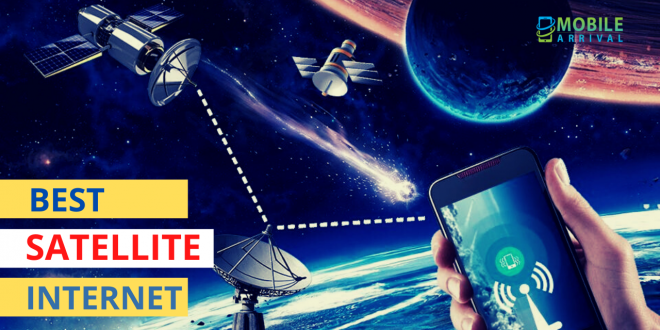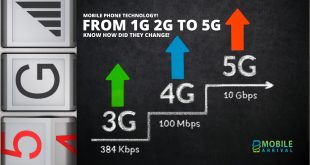Are you searching for the best satellite internet plans in California? Then you come to the correct webpage. The best satellite internet service costs $100 per month to get Viasat’s Unlimited Gold 50 plan in California.
Unlimited data is included in this package, along with speeds up to 50 Mbps.
We offer free installation for a limited time, saving you $99.99 in upfront fees.
After three months, you will have to pay $150 per month for the service.
There is nothing secret about satellite internet: it is simply an internet connection over satellite.
Throughout California, satellite internet is available, including the farthest reaches of the High Sierra and the desert.
The advantages and disadvantages of satellite internet include its cost, speed, and coverage. Read on to decide if this service is right for you.
Contents
- Best satellite internet plan in California
- Overall advantages of Hughesnet vs. Viasat
- Plans from Viasat Liberty vs. Unlimited
- Pricing and conditions for Viasat versus HughesNet
- Can satellite television be viewed? Are my orders able to be combined?
- Kuiper and Starlink: how they differ from other carriers in California
- Satellite Internet: A Good Alternative?
- Can satellite internet be found in California?
- The Price of Satellite Internet
- Satellite Internet for Gaming
- FAQs:
Best satellite internet plan in California
Choosing satellite internet in California isn’t easy. Still, there are some options to choose from so you can meet a variety of requirements.
The best option for heavy users
Watching high-definition TV shows and movies or playing online often might be a good idea for you.
For this purpose, you’ll need a satellite internet subscription through Viasat, formerly Exede.
You can receive unlimited data through their Unlimited Gold 50 package at speeds up to 50 Mbps.
Remember, however, that the monthly cost will increase after the first three months.
Best for Casual Users
You may choose Viasat’s less expensive alternative if you only use your home internet to browse the web or send emails.
The bandwidth will still be unlimited but at a slower pace. That should be enough for most people who don’t regularly stream videos online or download large files.
HughesNet offers the most affordable 10 GB plan
As of now, HughesNet’s entry-level 25 Mbps service, offering speeds of at least 25 Mbps, is California’s least expensive satellite internet option.
There is a $59.99 monthly fee in addition to a $99 one-time activation fee and a $14.99 monthly equipment lease fee for both router and dish included in the package.
This amounts to $79 per month over two years.
Additionally, you can further reduce costs by purchasing your dish and router when signing up with HughesNet.
A two-year lease costs about the same as the cost of the equipment,
You can save money if you stay with them for at least two years.
You pay a fixed fee of $59.99/month for the remaining 7–10 years of the equipment’s expected life.
The 10 GB limit on data makes it difficult to stream SD videos for longer than 20 hours or browse the web regularly for 120 hours (email, Reddit, etc.).
Even though HughesNet offers a variety of plan upgrades, we recommend this plan for 1–2 people with basic internet needs.
You can upgrade to a higher-capacity plan or additional data if you need it in a given month.
If you want to switch plans each month, you can do so without penalty, as with a cell plan.
The best performance plan is Viasat Unlimited Silver 25
Some parts of California are eligible for a $30 monthly discount when they purchase Viasat’s Unlimited Silver 25 package, which starts at $100–120 per month.
The lowest average monthly price for a two-year contract is $106.25, including a $10 equipment lease charge per month.
Some zip codes can cost as much as $150 per month for this plan.
The name is somewhat misleading because the plan doesn’t offer unlimited data. As with other satellite internet subscriptions currently on the market, it has a “soft restriction” on data usage.
During any 30 days, if you use more than 60 GB, there will be a performance reduction to protect other users.
The 60 GB package is six times larger than HughesNet’s basic package. It is perfect for a household’s basic needs, including video streaming.
There is currently no comparison between HughesNet’s “unlimited” package and Viasat’s.
You will not suffer a performance hit if you live outside a densely populated area.
A family with 1–3 people that anticipates streaming Netflix and video chatting without experiencing throttling in the middle of the month would benefit most from the “middle of the road” plan.
Overall advantages of Hughesnet vs. Viasat
Viasat is the best option for most of the country, while HughesNet is the backup, at least in California.
As of right now, HughesNet’s only significant difference is that their pricing is fairly straightforward and does not change from month to month like other services.
Meanwhile, Viasat advertises promotions for new customers to attract them.
As a result, you might sign up for a $70 monthly plan and end up paying $100 once your contract is up for two years.
Customers often overlook these terms, reflected in relatively low ratings on review sites such as Yelp and consumer rating systems like ACSI.
As a result, Viasat’s service utilizes geostationary satellites, enabling it to reach terabyte-sized bandwidth.
Some people find it surprising that only one or two satellites provide all North American customers. Still, it makes sense when you think about it.
Plans from Viasat Liberty vs. Unlimited
Viasat offers several plans, each with a different brand name like “bronze/silver/gold” or “unlimited/liberty.”
They correspond with the speed of service offered in each country region, which is quite perplexing.
The speed on Viasat Liberty plans is reduced to 1–5 Mbps when you exceed your data limit.
Viasat’s Limitless plans don’t technically offer unlimited speed. Still, if your speed reaches a cap, you’ll only be throttled if it is necessary for network prioritization.
You usually have a spot in line ahead of Liberty subscribers regarding bandwidth. However, this may not always be the case.
Installing a receiver dish, such as the one pictured, is necessary for receiving satellite internet.
It is usually installed on the roof or side of a building and a “tripod” in the yard.
No satellite operator in California provides rollover data, and neither package includes it.
Because data limitations are designed to minimize congestion, the amount is roughly the same month after month.
Pricing and conditions for Viasat versus HughesNet
Requirements for a minimum service term
Two-year commitments are required from HughesNet and Viasat. Before the first year ends, cancellation could cost you as much as $400.
Prices
While HughesNet’s “price per GB” is better than Viasat’s, Viasat has comparable prices in California.
For a service with comparable bandwidth to cable or DSL, both services cost around $200 per month –
Despite this, either provider’s largest guaranteed data package is only 150 GB, which is one-tenth of the amount of internet-wired internet providers such as Comcast and AT&T.
There is a monthly fee associated with HughesNet and Viasat’s WiFi routers and other equipment for providing access to your home.
Data caps
There is no such thing as a “soft cap” on Viasat or HughesNet, which means you only get a certain amount of data each month unless you pay a higher monthly fee.
Data packages range from 10 to 150 GB per month, and if you exceed them, you can pay per GB.
As a result, both providers will reduce your speed if you use more data than allowed by your plan.
Can satellite television be viewed? Are my orders able to be combined?
Satellite TV is available in California via DirecTV and Dish Network.
Satellite internet services, for example, have the advantage that they can be accessed from anywhere with an uninterrupted view of the southern sky.
As with satellite internet, satellite TV is relatively expensive compared to cable. Sports programming is the primary reason for the popularity of DirecTV, including the NFL Sunday Ticket.
Kuiper and Starlink: how they differ from other carriers in California
Satellite internet service provider Starlink’s entry into the satellite industry is significant for rural Californians.
Due to the company’s promise of providing 100 Mbps internet at prices and data rates competitive with traditional cable connections
There are a small number of geostationary higher orbit satellites that are used by traditional satellite operators such as Viasat and HughesNet,
Satellite companies such as Starlink and others that operate in low earth orbit hope to reduce latency greatly.
Increasing speeds will require maintaining a network of small, less expensive satellites that circle the Earth in low orbit.
Although there are coordination problems, this has been demonstrated to function in principle.
At this point, the only concern is whether the hardware will keep up with demand.
It is unclear whether the new carrier will experience oversubscription difficulties similar to those already experienced by existing networks.
Following Starlink’s launch, analysts expect Viasat and HughesNet costs and bandwidth to improve.
As a result of the drop in consumers, both firms will likely need less prioritization since their strategies now emphasize prioritization.
Rural Californians have other options for accessing the internet besides satellite.
Additionally, fixed wireless connections, mobile hotspots, and DSL over telephone lines are options in rural California.
Businesses such as Mojave WiFi and Google Webpass provide fixed internet connections in the Joshua Tree region.
This technology transmits internet service from a tower to a fixed receiver.
Satellites require the signal to travel to and from orbit, which is why this is superior.
The result is reduced latency and performance comparable to cable and DSL.
Due to the need for a direct line of sight, fixed wireless services are patchy and are not widely available.
This phenomenon is more common in areas where the population is densely distributed over a large area, such as Joshua Tree or Pioneertown.
The operation of mobile hotspots is similar to that of satellites, with stringent data restrictions. Among Verizon’s services is its “jetpack” service, aimed primarily at rural areas.
Nomad Wireless, for example, provides mobile hotspots as a service.
RVs and mobile units are a fantastic option, but they’re not always the best choice for fixed buildings, like houses and barns.
95 percent of the state’s people live in barely 5% of its total square miles, making California mostly a rural state.
Wireline services such as fiber and cable make it difficult to serve large mountainous and desert terrain areas.
Your proximity to the DSL provider affects your DSL speed. In your city or county, AT&T and Frontier offer phone service.
You may want to contact them to see if their service is available at your address.
Make sure to test the speed after the equipment has been installed in rural areas. The speed is usually much slower than stated due to signal fading over old copper wires that travel many miles.
Satellite Internet: A Good Alternative?
The following considerations should be considered when choosing an internet service package:
- Price
- Coverage
- Data transfer rate
- Allowance for data use
- Installation and equipment
- Contract duration
This brief guide will give you an overview of how satellite internet compares with other cables, DSL, and fiber options.
The information is for the internet only in the following table; no TV and phone bundles are included.
Internet service providers may offer specials or offer not included in prices.
Despite being cheaper than other options, satellite internet is often very expensive. It will also cost you quite a bit for installation.
On the other hand, Satellite internet plans typically reach locations in California where other options cannot.
What Others Are Saying
The customer reviews for Viasat and HughesNet, the only two satellite Internet providers in California, aren’t exactly positive enough to get you rushing out and changing your internet service right away.
Consumers give a national average of 1.5 out of 5 stars to the suppliers. Consumer complaints most commonly include:
- Untrustworthiness (poor or no service at all)
- Slower than expected speeds
- Speeds insufficient for streaming or gaming
- The weather has severely disrupted service.
- Inadequate high-speed data allotment
- Fees for early termination are exorbitant.
Satellite internet, however, has been extremely popular with California consumers.
They comment on the following:
- Fast speeds consistently
- Rural locations benefit from this product.
Taking a decision
If you live with many people, satellite internet might not be suitable.
Satellite internet users create jammed satellite beams that result in sluggish or non-existent service as more and more people use satellite internet.
Alternative internet service providers, such as cable, fiber, and DSL, can be compared.
Your cable internet options may be limited if you live in a remote location, like the Central Valley or a farming village west of Sacramento.
Satellite internet might be a viable choice if this is the case.
Can satellite internet be found in California?
It is possible to get satellite internet in California at speeds of up to 100Mbps, enough to stream HD video and play online games for 3-5 users/devices.
Although it is faster than some fiber and cable internet subscriptions, which may achieve speeds of up to 1Gbps and 300Mbps, respectively, it is still slower than other internet alternatives.
The Price of Satellite Internet
The cost of installing satellite internet in California is rather high,
You can lower your monthly rates by choosing a slower speed or a plan with a limited amount of data.
New customers can find special offers from satellite internet providers, such as free installation or other discounts.
Consider a package deal through a cable or DSL internet provider if you want a TV and a home phone.
As a result, satellite internet offers no bundle options, although bundling can save you a lot of money.
Fees for Equipment and Other Items
Installing satellite internet requires professional help, so you’ll have to pay an installation fee that ranges from $100 to $450, based on where you live in California and what provider you go with.
You can find special discounts from satellite internet providers that include free installation from time to time, so always be on the lookout!
The installation fee covers satellite dish installation. You must return if you cancel your subscription; however, a modem or WiFi router is not included. There are several options available:
- Utilize your modem.
- Hire a modem
- Purchase a modem from your satellite internet service provider.
Coverage in California
The speeds offered by satellite internet in California vary by location and zip code. Still, satellite internet is available across the state.
Viasat plans offer the following maximum download speeds in several California cities:
- LA: 12Mbps
- A 50Mbps connection is available in Sacramento
- The Fresno area has a 100Mbps connection
- In Santa Barbara, the speed is 12Mbps
- The San Diego area has 100Mbps
- In San Bernardino, the speed is 50Mbps
For your satellite dish to connect to the internet, you will require a clear view of the sky.
In cities with many tall buildings or densely populated areas, your connection speed or quality is likely to be slower.
Satellite Internet for Gaming
The satellite internet option may appeal to you if you like playing online games, but it may not be your best option.
As explained previously, the best choice for rural Californians without broadband internet is satellite internet.
When choosing satellite, fiber, cable, and DSL, however, you need to be aware of the delay you would endure if you chose satellite.
Your satellite dish’s latitude is determined by how far it is from the satellite in orbit, as well as how long it takes the satellite’s signal to travel between the two.
This latency may be particularly aggravating if you’re playing online games in which making split-second decisions is imperative while competing against other players in real-time.
You’d be shot before you even saw each other in Call of Duty or PUBG if all players were delayed by half a second.
Conclusion
Hope you like Our article on the best satellite internet plans in California; if you still have some questions or queries regarding the best satellite internet plans in California, mention those in the comment section.
FAQs:
There are satellite packages that offer unlimited streaming, but they are very expensive. It is normal for the installation fee to be as high as the monthly fee.
The Starlink constellation consists of low earth orbit (LEO) satellites, which fly over us at 550 to 1,200 kilometers (km) above ground level,
The geosynchronous orbits of HughesNet and Viasat are considerably higher at 35,000 kilometers (km). These people would probably prefer Starlink.
Satellite internet has many disadvantages compared to its benefits, as you can see. The solution is neither the most reliable nor the most affordable. With this technology, you can connect to the internet faster and in areas where other connections are unavailable.
Connecting to the internet on the road is possible in three ways: Using WiFi in the vicinity, connecting via satellites, or using mobile hotspots. Cellular data plans are also an option. Satellite systems are almost complete.
Starlink, similar to Viasat internet, is a completely limitless service from SpaceX instead of a tiered pricing plan. The $99 monthly fee for Starlink Internet makes it one of the cheapest satellite internet providers.
Rural and remote AT&T customers will now be able to access the carrier’s satellite services since the service is now available in 13 states within the carrier’s local calling region. All of AT&T’s customers will utilize broadband services as part of the company’s ambition. AT&T claims to be the largest DSL provider in the United States, with 7.4 million lines in service.
Cloud cover and rain: Satellite dishes designed for Starlink are designed to perform well in moist, cloudy conditions. Major storms can still disrupt the signal, and the connection speed can be decreased. Nonetheless, it is more likely that strong storms will disrupt the region than cause major disruptions.
From 50 Mbps to 150 Mbps are the download speeds offered by Starlink. The enrollment fee for Starlink beta is $99 and can be paid on the company’s website. Your email address will be notified when service is available in your area; however, most people have had to wait up to six months for the service to be available.
 Mobile Arrival Smartphones and gadget reviews, news and more.
Mobile Arrival Smartphones and gadget reviews, news and more.







